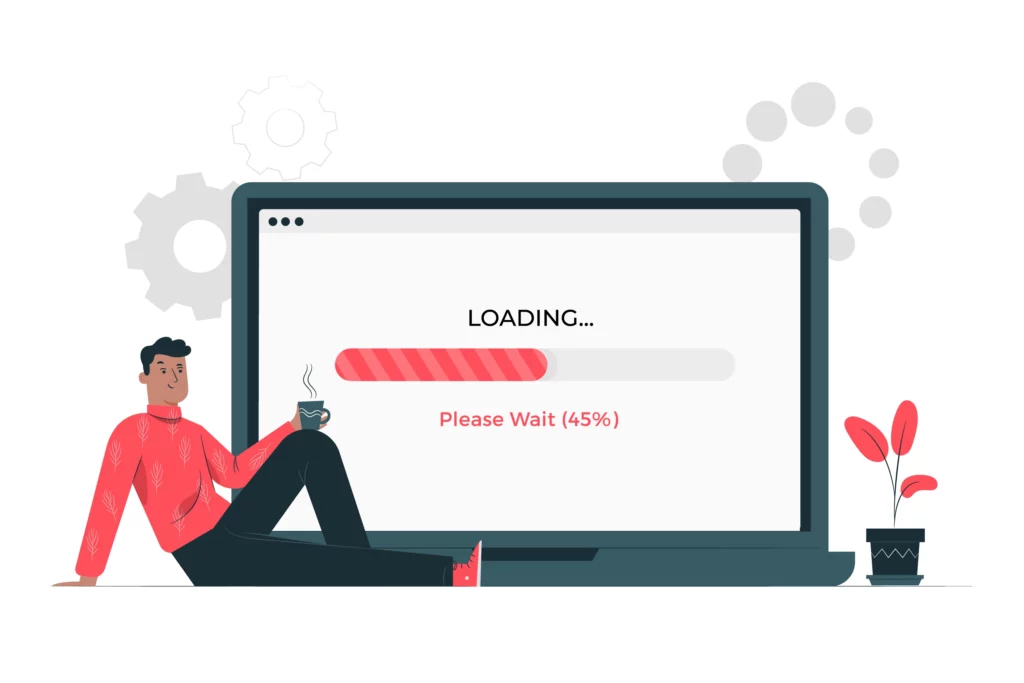Image optimization has a significant impact on website speed and user experience online.
- Why is image optimization important?
- How to optimize images for websites
- Image optimization tools
- Practical examples of image optimization
- Positive effects of image optimization
- Best practices and tips for image optimization
- Conclusion
Why is image optimization important?
Image optimization plays a key role in improving efficiency and website speedHere's a more detailed overview:
- The impact of image size on page loading:
- Larger images require more time to transfer from the server to the user's device.
- Longer loading times can cause visitors to abandon your website, affecting your bounce rate and overall user experience.
- How careless use of images can negatively impact speed:
- Careless use of high-resolution images when not necessary can cause unnecessary increases in the size of web pages.
- This can lead to long loading times, which in turn reduces efficiency and user satisfaction.
Image optimization is key to reducing page load times, which positively impacts user experience and helps keep visitors on your website.
How to optimize images for websites
Optimizing images for websites is key to achieving better loading speeds and improving the user experience. Here is a more detailed overview of the steps for successful image optimization:
- Choosing the right image format:
- When choosing an image format, you need to consider the type of image and its use.
- JPEG is usually best for photographs and images with higher color depth, while PNG is suitable for images with alpha channels and transparency.
- Avoid formats like BMP, which have a larger file size.
- Compressing images without losing quality:
- Use lossless image compression to reduce file sizes.
- Image compression tools preserve the visual quality of an image but reduce the file size.
- Correct image size for web needs:
- Adjust the images to the actual dimensions your website needs.
- Avoid using images that are too large, as this can cause unnecessary page size increases.
- Using lazy loading technique:
- Lazy loading allows images to load only when the user actually sees them on the screen.
- This reduces initial loading time and reduces server load.
Image optimization is not just a technical process, it's also an art, as you have to decide how to maintain the visual appeal of the image while reducing the file size. With the right approach, you can achieve faster page loading and improve the user experience.
Of course, let's continue to expand and deepen the next point of the “Image Optimization Tool”:
Image optimization tools
When optimizing images, it's crucial to use the right tools to help you reduce the file size of your images while maintaining their visual quality. Here are some popular image optimization tools:
- Adobe Photoshop:
- Photoshop offers advanced options for optimizing images, including compression and quality adjustments.
- Users can choose the appropriate compression level and image format.
- TinyPNG:
- TinyPNG is a web tool that allows you to compress images without losing quality.
- Easy to use and suitable for quick optimization of individual images.
- ImageOptim:
- ImageOptim is a tool for macOS that automatically compresses images when you export them from other programs.
- Useful for processing multiple images at once.
- WP Smush (for WordPress users):
- WP Smush is a WordPress plugin that automatically compresses images when you upload them to your website.
- A simple application for managing images on the WordPress platform.
- Kraken.io:
- Kraken.io offers advanced image optimization and also the ability to manage different formats.
- Suitable for professionals who need high quality optimization.
Choosing an image optimization tool depends on your needs, technical skills, and the platform you are using. It is important to regularly optimize the images on your website to maintain loading speed and improve the user experience.
Practical examples of image optimization
In this section, we will examine practical examples of image optimization and how you can use them to improving your website speed:
- Steps for optimizing images on a WordPress website:
- If you use WordPress, you can use plugins like WP Smush to automatically compress and optimize images.
- Learn the steps for uploading and managing images in WordPress.
- Using a CDN (content distribution network) to load images even faster:
- A CDN is a network of servers that stores copies of your images in different locations around the world.
- This allows for faster loading of images for visitors from different geographical areas.
- Responsiveness of images for mobile devices:
- You can adjust images for different screen sizes to ensure they display correctly on mobile devices.
- Use the “srcset” attribute to mark different versions of images for different devices.
- Image icons and social media icons:
- Use appropriate icon image formats (such as SVG) for fast loading and high quality.
- Optimal size of image icons for different purposes.
- How to regularly check and optimize images:
- It's important to regularly check and optimize the images on your website, as new additions can accumulate over time.
- Use speed monitoring tools to see how images affect page loading.
Practical examples of image optimization will help you understand how to apply techniques to improve the speed and user experience on your website. Following these tips will help you achieve better performance and user satisfaction.
Positive effects of image optimization

Optimizing images on your website can bring many positive effects that improve visitor experience and the performance of your website:
- Faster page loading:
- Optimized images reduce page loading times, which contributes to a better user experience.
- Users will see content faster and wait less.
- Better user experience:
- Faster and smoother image loading contributes to a positive user experience.
- Visitors will feel better on your website.
- Improving search engine rankings:
- Websites with better loading speed and optimized images often have better positions in search engine results.
- This can increase organic traffic and visibility.
- Less server load:
- Optimized images reduce server load, leading to better web hosting performance.
- The server will better handle traffic and requests.
- Bandwidth savings:
- Smaller image sizes mean less bandwidth usage, which can save on hosting costs.
- This is important for websites with high traffic.
- Low abandonment rates:
- Fast loading images reduce website bounce rates by making visitors stay longer.
- Higher likelihood of interaction and conversions.
Image optimization is not just a technical task, but a strategic step to improve the performance and appeal of your website. Taking these effects into account will help to better the success of your online presence.
Best practices and tips for image optimization
When optimizing images, it's important to follow best practices and tips to help you achieve the best results. Here are some key tips:
- Use image optimization consistently:
- Perform image optimization for every image you upload to your website.
- Remember that each image contributes to loading speed.
- Avoid oversized images:
- Check that the images on your website are properly scaled according to their actual use.
- Mobile users appreciate smaller image sizes.
- Check the image quality:
- Make sure images maintain high visual quality despite compression.
- Too high a compression level can cause loss of detail.
- Optimize images before uploading:
- Before uploading images to your website, optimize them with appropriate tools.
- This reduces server load and loads images faster.
- Follow the speed of your website:
- Use speed monitoring tools to see how images affect load times.
- Adjust your optimization strategy based on results.
- Avoid unnecessary images:
- Check your website and delete unnecessary images or those you no longer use.
- A smaller number of images reduces the scope of optimization.
By consistently applying best practices and image optimization tips, you can achieve excellent loading speeds and improve the user experience on your website.
Conclusion
Image optimization is a key component to improving the speed and performance of your website. By following best practices, optimization tools, and practical examples, you can achieve faster page loading times, improve user experience, and increase the visibility of your online presence.
Remember that image optimization is a dynamic process. Regularly monitor and update the images on your website to maintain the best results. A consistent approach to image optimization will help you maintain a competitive advantage and ensure that your website visitors remain satisfied.

